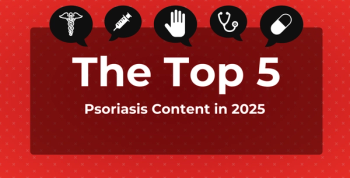
New Potential Link Found Between Heart Failure, Carpal Tunnel Syndrome
This new study compared heart failure–related outcomes between adults patients randomly assigned 1:1 by carpal tunnel syndrome status, with the principal outcome being a diagnosis of new-onset heart failure.
The potential for new-onset
Investigators say this may be because transthyretin (ATTR) cardiac amyloidosis—a disorder in which faulty proteins (fibrils) build up that can be seen on the heart or nerves3—is being detected more often in persons with CTS.
Data on the 163,796 overall patient cohort (n = 81,898 with CTS; n = 81,898 without CTS [control group]) came from 1284 general practices in Germany for adults who received care between January 1, 2005, and December 31, 2020, and received an initial diagnosis of CTS during that period. Most patients were women (66.7% of the group with CTS and 66.3% of the group who did not have CTS).
The principal outcome was new-onset HF diagnosis up to 10 years after the index date, which was when the CTS diagnosis was delivered.
For the primary outcome, HF was ultimately diagnosed in 8.4% of the CTS cohort and 6.2% of the no-CTS cohort (P < .001), or 8.7 vs 6.1 cases per 1000 patient-years. The overall risk of this comorbidity was a 39% (HR, 1.39; 95% CI, 1.31-1.47) greater chance of receiving a HF diagnosis with a history of CTS and the primary factor associated with this outcome was older age; patients aged 61 to 70 years and 70 years and older had a 48% greater risk (HR, 1.48; 95% CI, 1.35-1.61) of developing HF with a history of CTS. Similar associations were not seen for the study’s remaining age groups: 18 to 40, 41 to 50, and 51 to 60 years.
Over the 10-year follow-up, mean (SD) total annual physician visits were equivalent between the groups, at 8.2 (6.4) each, as were rates of
An additional analysis determined that amyloidosis was diagnosed in 0.06% of the study group and in 0.02% of the control group, demonstrating that the participants living with CTS had a 79% greater risk (HR, 1.79; 95% CI, 1.01-3.18; P = .05) of developing amyloidosis. Multivariate logression analysis, too, showed a higher risk of HF linked to CTS, but somewhat reduced: 24% (HR, 1.24; 95% CI, 1.20-1.29).
Because the diagnoses in this analysis were based on International Classification of Diseases, Tenth Revision codes and due to the small total of patients in whom amyloidosis was seen, these findings may not be generalizable to a wider patient population. In addition, underreporting is another potential limiting factor.
“However, our study reveals an association between CTS and HF,” the authors concluded. “Thus, we point to a new role for surgeons together with general practitioners in the early detection of important internal diseases, a chance for better treatment, and an improved prognosis of these diseases.”
References
1. Carpal tunnel syndrome. National Institute of Neurological Disorders and Stroke. Accessed July 12, 2023. https://tinyurl.com/2p9xfmr6
2. Luedde M, Schmidt VJ, Gänsbacher-Kunzendorf J, Kostev K. Association between carpal tunnel syndrome and subsequent heart failure among adults in Germany. JAMA Netw Open. Published online July 12, 2023. doi:10.1001/jamanetworkopen.2023.23091
3. Transthyretin amyloidosis (ATTR-CM). Cleveland Clinic. Accessed July 12, 2023. https://my.clevelandclinic.org/health/diseases/17855-amyloidosis-attr
Newsletter
Stay ahead of policy, cost, and value—subscribe to AJMC for expert insights at the intersection of clinical care and health economics.








































